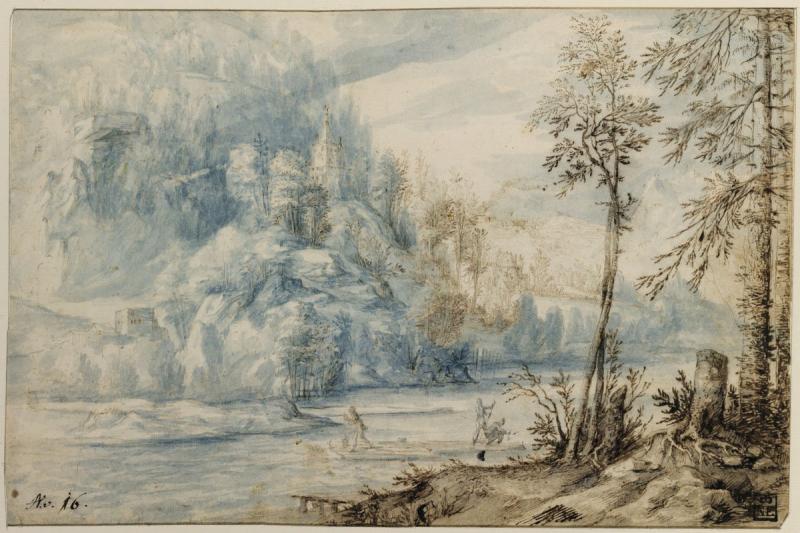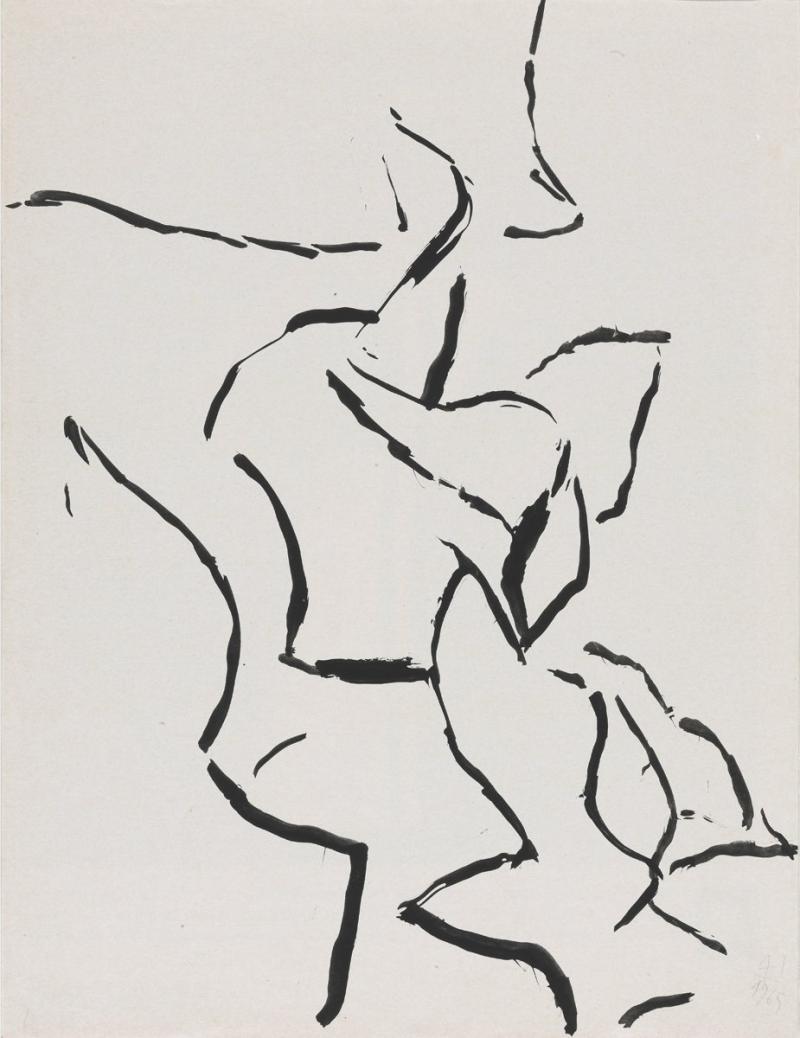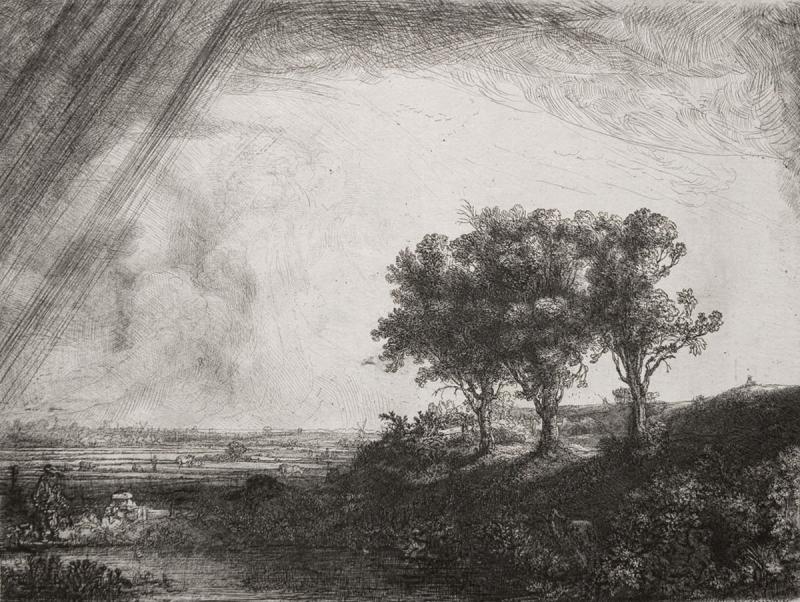Gateways in Existence presents works by contemporary artist Alexandre Hollan, born in Hungary (Budapest, 1933) and now residing in France, in the company of depictions of trees and landscapes by some of the most prominent masters in the history of European drawing and printmaking. Besides works by Hollan, viewable from 9 October in the recently revamped exhibition hall of the Museum of Fine Arts are compositions by the great classics of tree depictions and landscape art, including Wolfgang Huber, Pieter Bruegel the Elder, Jan Brueghel the Elder, Claude Lorrain, Camille Corot, Rembrandt and Nicolas Poussin.The exhibition is open every week from Thursday to Sunday with a permanent exhibition ticket. The exhibition hall of Prints and Drawings is closed on Tuesdays and Wednesdays.
The selection of more than fifty outstanding works not only exemplifies some of the pinnacles of European landscape art but also offers an overview of the different techniques of graphic art: pen-and-ink drawing, coloured woodcut, copperplate engraving, etching, cliché-verre and acrylic painting. This is all made possible by the rich holdings of the Collection of Prints and Drawings at the Museum of Fine Arts, Budapest, including the significant group of artworks donated to the museum by Alexandre Hollan himself between 2003 and 2019. The Hungarian-born artist, a sensitive observer of the inner forces of trees, has gifted more than 150 of his works to the museum since 2003, of which an important selection of twenty-four pieces can be seen at this exhibition.
Alexandre Hollan left Hungary in 1956. The young artist was welcomed into the École nationale supérieure des Beaux-Arts in Paris to complete his studies there. In the cold seasons, his atelier ties him to Paris, while he spends his summers in Gignac, in the south of France, where, roaming the countryside, he revisits his favourite trees and by observing their subtlest vibrations produces meditative drawings with the delicate touch of the charcoal or the brush.
Visitors can again see works by a contemporary artist displayed in parallel with relevant pieces by the old masters. Drawings and prints by old masters set in dialogue with Hollan’s works at this exhibition are examinations from different periods of the relationship btween humans and nature, and of the symbolic ways in which trees can be interpreted. In addition, they tackle universal questions of art that have long posed challenges to artists through the eras: how to form a portrait of a tree, how to depict a wooded landscape, how to exploit the latent possibilities of drawing directly in front of the motif, how to portray the forces of nature, how to convey the light phenomena found in nature, and how to shift away from objective reality. Among the great masters admired for their landscapes and their depictions of trees – Wolfgang Huber, Pieter I Bruegel, Jan I Brueghel, Claude Lorrain, to mention just a few –, we have selected works by artists who specifically inspired Hollan, whom he mentions in his writings and interviews, and whose works he even paraphrased (Rembrandt Harmensz. van Rijn, Nicolas Poussin).
In our day and age, when the act of planting a tree may be prompted not only by a desire to embellish our surroundings or to preserve a memory but as a gesture of common concern about the future of our planet, we may rightly ask: What are the messages of trees, the vital fellow constituents of our habitat, as conveyed through the searching gaze of artists? How do trees appear in the different ages of art, in the most immediate and personal medium of the creative process, the art of drawing? After all, drawing a tree means observing it in detail and connecting with it intimately, unlocking its magical message.
The curator of the exhibition is Bernadett Tóth, art historian at the Museum of Fine Arts, Budapest.
 Landscape with Willows and a Water Millverso (recto); Study of a Male Head (verso) Wolf Huber (c) mfab.hu - Mit freundlicher Genehmigung von: mfab.hu
Landscape with Willows and a Water Millverso (recto); Study of a Male Head (verso) Wolf Huber (c) mfab.hu - Mit freundlicher Genehmigung von: mfab.hu
 Waterfall in a Forest with Three Travelers Aegidius II Sadeler Roelandt Savery (after) (c) mfab.hu - Mit freundlicher Genehmigung von: mfab.hu /
Waterfall in a Forest with Three Travelers Aegidius II Sadeler Roelandt Savery (after) (c) mfab.hu - Mit freundlicher Genehmigung von: mfab.hu /  Milites Requiescentes (Soldiers at Rest) Jan van Doetechum Lucas van Doetechum Pieter Bruegel I (after) - Mit freundlicher Genehmigung von: mfab.hu /
Milites Requiescentes (Soldiers at Rest) Jan van Doetechum Lucas van Doetechum Pieter Bruegel I (after) - Mit freundlicher Genehmigung von: mfab.hu /  Stag Hunt Claude Gellée (Claude Lorrain) (c) mfab.hu - Mit freundlicher Genehmigung von: mfab.hu /
Stag Hunt Claude Gellée (Claude Lorrain) (c) mfab.hu - Mit freundlicher Genehmigung von: mfab.hu /  River Coast with Raftsmen Paulus van Vianen (c) mfab.hu - Mit freundlicher Genehmigung von: mfab.hu /
River Coast with Raftsmen Paulus van Vianen (c) mfab.hu - Mit freundlicher Genehmigung von: mfab.hu /  Foliage Study Alexandre Hollan (c) mfab.hu - Mit freundlicher Genehmigung von: mfab.hu /
Foliage Study Alexandre Hollan (c) mfab.hu - Mit freundlicher Genehmigung von: mfab.hu /  The Three Trees Rembrandt Harmensz. van Rijn (c) mfab.hu - Mit freundlicher Genehmigung von: mfab.hu /
The Three Trees Rembrandt Harmensz. van Rijn (c) mfab.hu - Mit freundlicher Genehmigung von: mfab.hu /